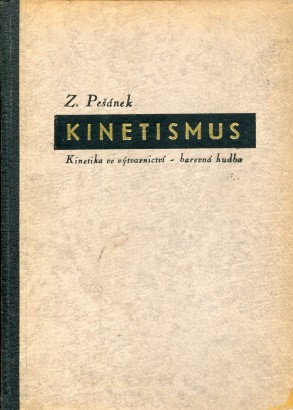László Moholy-Nagy: The Art of Light (2010) [Spanish]
Filed under book, catalogue | Tags: · art, avant-garde, bauhaus, constructivism, film, graphic design, light art, painting, photography, sculpture, typography

An artist and thinker of astounding energy and ability, Laszlo Moholy-Nagy was a true world citizen of the early twentieth century, an ambassador-at-large for Constructivism, Suprematism, Dada and the Bauhaus. He brought the same Constructivist optimism to every medium he tackled, from plexiglass and light sculpture to typography to his photographic experiments in color to his Suprematist canvases, his influential pedagogy at the Bauhaus and at the Institute of Design in Chicago. Moholy-Nagy’s concept of the arts as a totality, his pedagogy and his confidence in the new industrial culture that would level distinctions between art and craft led him into all fields of creative production. The ultimate modernist Renaissance man, Moholy-Nagy was prolific in so many realms that his detractors inevitably charged him with dilettantism. This accusation ignores his very real innovations in photography–for example his photograms–and light sculpture, as well as the fact that the artist’s aims possessed a conceptual unity in their common aspiration to make an “art of light.”
László Moholy-Nagy: The Art of Light presents Moholy-Nagy’s work in all of its glorious unity and diversity. Including more than 200 works, from painting, photography (black and white and color) and photograms to collages, films and graphic design, it emphasizes his greatest years of productivity, from 1922 to the end of his life. The Art of Light is the new definitive volume on this hero of modernism.
László Moholy-Nagy: El Arte de la Luz
Book coordination: Doménico Chiappe, Luisa Lucuix
Editor: Emilio Ruiz Mateo
Publisher: La Fábrica Editorial / Círculo de Bellas Artes, Madrid
ISBN: 8492841257, 9788492841424
264 pages
exhibition (Madrid, 2010)
Comment (0)Zdeněk Pešánek: Kinetismus: Kinetika ve výtvarnictví – barevná hudba (1941) [Czech]
Filed under book | Tags: · abstract cinema, art, avant-garde, film, kinetic art, light, light art, sound, visual music

Zdeněk Pešánek (1896-1965) was one of the most inventive and original Czech sculptors of the 20th century, who pioneered experiments in light- and kinetic sculptures. His works, highly abstract and biomorphic, made use of neon and incandescent lighting as part of the sculptural elements. He also was a designer for both architectural and interior structures, and worked with the fusion of light and music, developing the use of “clavieres a lumieres” and light-organs. His aesthetic was more informed by sound and tonality than visual precedent, and is quite original. At this date almost no sculptures exist in private hands and the public sculptures have been largely damaged or destroyed. The book Kineticism: Kinetics in Fine Arts – Color Music is the only publication in his lifetime in which his theories were given exposition and is his creative credo as well, replete with b/w and color illustrations. Amazingly published during the Nazi occupation.
Edited by Josef Vydra
Publisher: Česká grafická unie, Prague, October 1941
Edice výtvarné výchovy, svazek 8
144 pages
PDF (no OCR, updated on 2013-2-12)
Comments (3)
